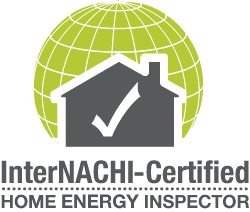Inspecting the sewer line of your home is an important and all to often overlooked part of the home buying and selling process. Many home inspectors do not offer sewer line inspections due to the additional equipment needed to inspect this underground system. Here at Blessed Assurance Home Inspections we offer this service to make your home buying or selling process easier and give you one less appointment to schedule.
Having a sewer line backup is a frustrating, and potentially expensive reality of owning a home. Even a relatively inexpensive sewer line repair can cost a few thousand dollars and more extensive repairs easily exceed $10,000-$15,000. Preparing yourself with knowledge about the sewer lines to your house gives you the power to make repairs before something like this happens or budget for needed repairs or replacement in the future.
The side sewer line is the pipe that exits the home and joins up with the city sewer main, at the street. Older homes built before the mid 1900’s, were commonly built with clay sewer pipes. Sometime around the middle of the 20th century, this changed to concrete. At the later half of the century, builders began using plastic pipes (PVC or ABS). Both Clay pipes and concrete pipes are subject to cracking. Tree root infiltration at cracks or joints is very common. While plastic pipes are more impervious to roots and cracking, they too are subject to problems when incorrectly installed, glued or maintained. Besides cracks and roots, pipe shifting, poor sealing at the joints and low spots can all lead to sewer backups into your home.
Q: The seller told us they just had the entire sewer system replaced. I don’t really need a sewer scope, do I?
A: Even a home where the seller has recently had sewer work done should be considered for scoping. We have an example of newer home where the seller hired a contractor to replace the old clay pipes in their home before putting it on the market. Upon having the sewer inspected during the perspective buyer’s due diligence period, it was discovered that the contractor left clay pipes at the last few feet leading to the street. These were cracked, and root growth was beginning to invade again.
Q: I’m buying a new build. I should be in the clear as far as my sewer system is concerned, right?
A: Another example is of a home that was completely torn down and built new just a few years ago. However, the builder used the existing clay pipes. So, while the house showed as being new in 2012, the sewer pipes were original to about 1920.
Q: So, I know this home has PVC pipe throughout and there are no issues reported with the sewer system. Surely, I don’t need to spend the extra money on a sewer scope?
A: We have seen newer homes with PVC pipes have issues due to joints improperly glued, heavy trucks crushing underground pipes during construction, or low spots where the pipe dips and water pools.
The bottom line is that sewer lines of all ages can have potential issues. Whether concrete, clay or plastic, inspecting your sewer line is a must. The small investment now could save you thousands down the road. All of our sewer inspection reports come with video for your protection as either a buyer or seller. Best of all, when you use our company for your sewer inspection with your home inspection , our standard Sewer Gard® Warranty is extended from 90 days to a FULL year. Don’t hesitate, call us today to schedule!








